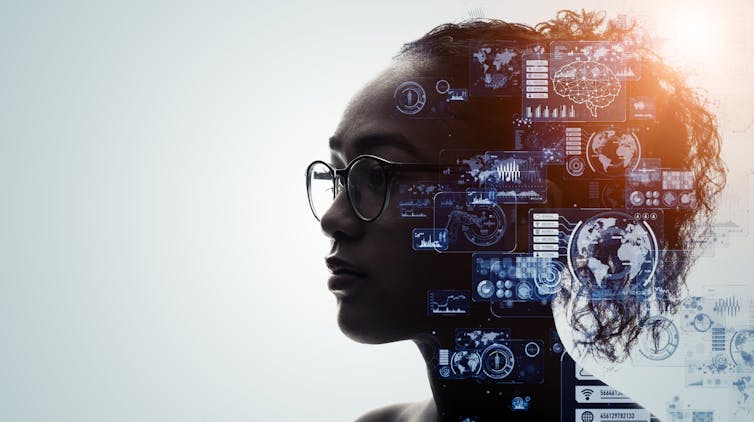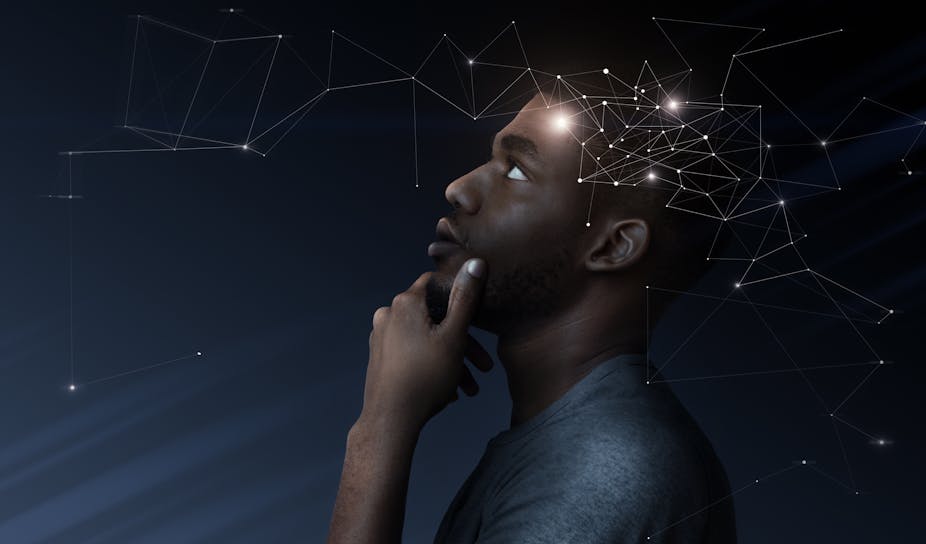When you hear someone talk, do you see the words in your mind’s eye? Or do you see what they’re saying as a movie? It’s easy to assume that the way you perceive the world is the same for everyone. But recent studies have revealed that there is a wide spectrum of how people visualise things in their mind’s eye. The vividness of your inner visual imagery can even change throughout your life.
We range from those who are “mind blind” and cannot visualise things mentally to those who have brilliant images in their mind. Some people see shapes in their mind when they hear music, or imagine colours when they see a number (a phenomenon called synaesthesia).
There’s even a type of synaesthesia in which people’s minds run a written text on a mental ticker tape. Even though ticker tape (or subtitle) synaesthesia (TTS) was first studied in 1883 by Charles Darwin’s cousin Francis Galton, little was known about it until lately.
A study published recently, one of the first to explore this condition in more depth, found that of the 26 participants with TTS, most had additional types of synaesthesia, most commonly space-time or number-space, where they experience time or numbers as a location.
There was some variety in how long people had had TTS, with 19 of the 26 participants with TTS saying they had experienced it since they learned to read, or for as long as they can remember. But three said it did not start until adolescence.
Around 40% of participants had TTS even in response to animal sounds, and 90% had it as a response to their inner voice. One participant told the researchers how after a few days of hearing a bird singing in his garden, he started seeing a written word in his mind that represented the bird’s song.
While many adults can imagine written words when listening to speech if asked to do so, people with TTS are different because of the ease with which it happens. In fact, some cannot stop, even when it makes it difficult to follow conversations when lots of people are talking at once. But the ability to process information from different senses at the same time is often helpful. There is an evolutionary explanation for this.

Ancient skills
When our ancestors walked on the African savanna over 100,000 years ago, fast recognition of what they heard or saw was essential. For example, upon hearing a sound coming from the bushes, humans had to quickly decide how to react. More information helps us make the right choice.
So if we also saw, or even smelled an animal in the scrub behind us, we could more easily determine if it was a dangerous predator we needed to escape from, or a fluffy little rabbit. As they evolved, our brains became experts in tying information from different senses together.
Binding information from different senses can help us reach faster and more accurate decisions. For example, when listening to speech that is not easily comprehensible, perhaps because of background noise, people better understand what is being said if they can see the speaker’s mouth move. During the time of COVID restrictions when masks were mandatory, many people realised how much harder they found it to understand others when they couldn’t see their mouth.
As is the case with TTS, we can sometimes boost the amount or type of information available to us by creating images in our minds. For example, after being trained to create visual images in their minds about a story that was being read to them, children who had difficulty understanding stories, scored higher on tests of story comprehension. This shows how more information, even if it is only an image in our minds, can help us better remember and understand the world around us.
In that sense, you can argue we are all on a spectrum of image creation. What happens then, when our minds cannot create mental images?
Research shows some people are born without the ability to see pictures in their mind, while others might lose this ability - following brain damage, for instance. My team’s study showed some stroke survivors cannot hear their own voice in their heads after damage to the left hemisphere of their brain.
Some stroke survivors lose their inner speech but can still speak out loud, while others lost overt speech to a stroke, while their inner speech remained intact. Similar cases of visual imagery loss have been reported as well.

On a spectrum
Researchers recently suggested fewer people are born towards the end of the low-visual-imagery spectrum. Extreme forms of aphantasia, people who do not have visual imagery at all, are rare. Less than 1% of people have this form. There isn’t enough data on people who cannot imagine their own voice in their heads to make a comparison. But a tweet that went viral a few years ago showed there might be more people who lack inner speech than you might imagine.
Some research suggests we are not born with the ability to imagine. Instead, visual images emerge and develop during early childhood. This is followed by a decline in visual imagination in adulthood. Much less is known of inner speech in childhood. Although Lev Vygotsky, a Russian psychologist, had a theory.
In the early 20th century, Vygotsky argued that children are born without inner speech. He argued that children start with private speech – speaking to themselves out loud when playing or thinking – and this is later internalised, becoming inner speech. Vygotstky’s work is well-accepted among scientists today.
Whether inner speech shows a decline in late adulthood, similar to that suggested for visual imagery, is unknown.
Visual and auditory imagery are connected to our ability to remember things, understand what we read and hear, and reflect on our lives and on who we are. We are all on a spectrum of mental imagery.
Some people find themselves on extremes of the spectrum at birth, and some shift to the ends after life events trigger change. But which type of incidents or what personal characteristics affect our imagery are largely unknown. Answering these questions is key to start exploring the human mind and helping those who lost their imagery.

